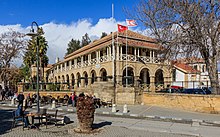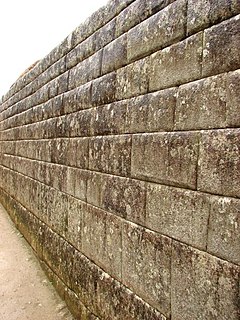
Selimiye Mosque, historically known as Cathedral of Saint Sophia, is a former Roman Catholic cathedral converted into a mosque, located in North Nicosia. It is the main mosque of the city. The Selimiye Mosque is housed in the largest and oldest surviving Gothic church in Cyprus possibly constructed on the site of an earlier Byzantine church.

Notre Dame de Tyre or Our Lady of Tyre is a monastic church in Nicosia, Cyprus. It is located in the Arab Ahmet quarter, in Salahi Şevket Street, formerly known as Victoria Street.

Dereboyu Avenue, also known simply as Dereboyu and officially as Mehmet Akif Avenue, is the busiest avenue in North Nicosia, as well as its centre of entertainment. The term "Dereboyu" means "alongside the river", and although in the traditional sense this is only used for Mehmet Akif Avenue running alongside the Pedieos river, the term has expanded in meaning to denote a region extending to the neighbouring Osman Paşa Avenue.
The following is a timeline of the history of the city of Nicosia, Cyprus.
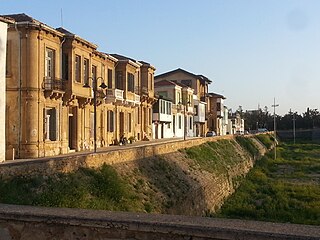
Arab Ahmet is a Neighbourhood, Quarter, Mahalla or Parish of Nicosia, Cyprus and the mosque situated therein. Both the Quarter and the mosque are named after Arab Ahmet Pasha, one of the Turkish commanders in the Ottoman conquest of Nicosia. It is spelled Arabahmet in Turkish and Άραπ Άχμετ in Greek.
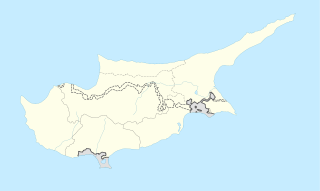
Ayios Andreas or Tophane is a Neighbourhood, Quarter, Mahalla or Parish of Nicosia, Cyprus. In September 1945, the Ottoman name of Tophane was changed to Ayios Andreas, but there is no parish church of that name.

Köşklüçiftlik is a quarter of North Nicosia in Northern Cyprus. In 2011, it had a population of 2,939.
Nicosia Municipal Theater is a prominent theatrical organization in Northern Cyprus. Headquartered in North Nicosia, it is organized under the Nicosia Turkish Municipality.

Büyük Hamam is a Turkish bath in the Iplik Bazar–Korkut Effendi quarter of North Nicosia. It stands close to the İplik Pazarı Mosque. As a result of the rise of the ground of the surrounding areas over time, its door is now located around 2 meters below the ground level, and the bath rooms are 3 meters below.

Kadı Menteş Mansion is a mansion in the Selimiye quarter of North Nicosia. It is located at the intersection of the Selimiye Square and the İdadi Street, and is currently as the headquarters of the Turkish Cypriot Union of Municipalities.

Bedesten or Bedestan is an historical building in the Selimiye quarter of North Nicosia, located directly beside the Selimiye Mosque. The structure has a long and complicated history spanning more than one thousand years. Originally built as a church in about the sixth century, and expanded and rebuilt between the twelfth and sixteenth centuries, it was converted to a bedesten, a type of covered market, during the period of Ottoman rule. It is currently used as a cultural centre.
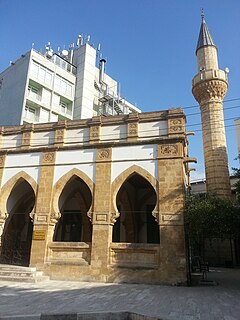
Sarayönü Mosque, also known as the Mosque of the Serai, is a mosque in the walled city of Nicosia, Cyprus, currently located in North Nicosia. It is very close to the Sarayönü Square and has historically been on the square.

Nicosia Post Office is a historical building in Nicosia, currently located in North Nicosia. It is located very close to the Sarayönü Square.
Akkavuk Mosque is a mosque without a minaret in the Akkavuk quarter of Nicosia, currently located in North Nicosia. The mosque was built in 1902, On the site of what appeared to be a small medieval chapel or church. A smaller mosque on the site had been built in 1895. The apse of the original building with a moulded arched window of 16th-century style survived, but all such traces have now been removed.

Dervish Pasha Mansion is a historical mansion and ethnographic museum in the Arab Ahmet quarter of Nicosia, currently located in North Nicosia. It lies on the Beliğ Paşa Street and has two floors. It is considered to be one of the finest examples of Ottoman architecture in Cyprus.
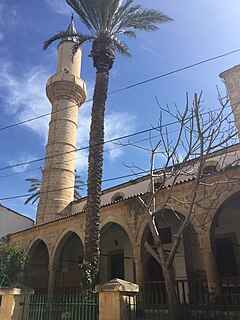
Turunçlu Mosque, also known as Turunçlu Fethiye Mosque is a mosque in the Iplik Bazar–Korkut Effendi quarter in the walled city of Nicosia, currently located in North Nicosia. It dates to the Ottoman period. It is located on Beliğ Paşa Street.
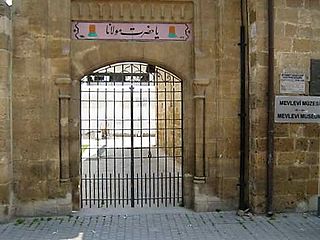
Mevlevi Tekke Museum is a tekke in Nicosia, Cyprus, currently in North Nicosia. It has historically been used by the Mevlevi Order and now serves as a museum. It is one of the most important historical and religious buildings in the island. It is located next to the Kyrenia Gate, on Girne Avenue, in the İbrahimpaşa quarter.




